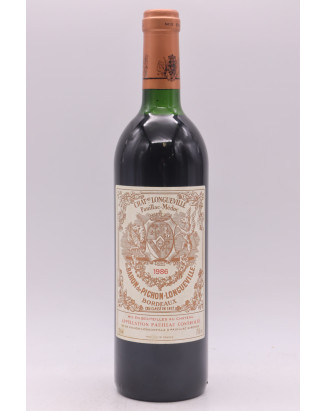





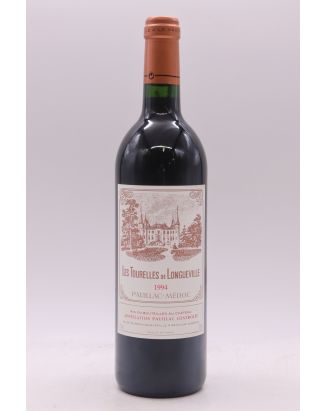

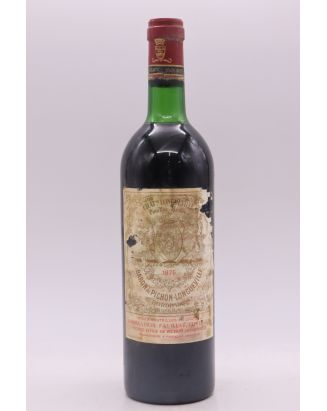


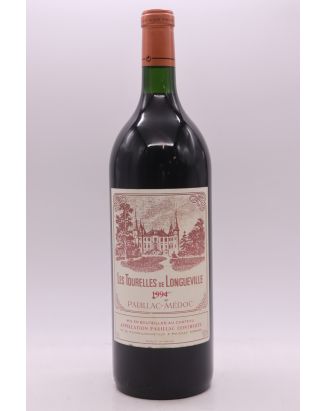

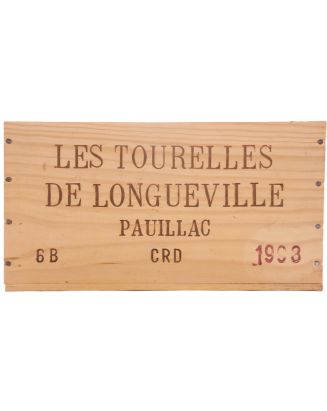
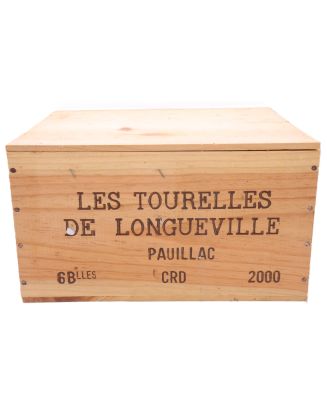





The history of Château Pichon Longueville Baron dates back to the late 17th century, with the purchase of vineyards in 1689 by Pierre Desmezures de Rauzan, a prominent wine merchant. In 1694, his daughter Thérèse married Jacques Pichon de Longueville, marking the birth of what would become one of the most renowned estates in Pauillac. The estate remained in the family for several generations, gradually building its reputation.
A decisive turning point came in 1850, when the property was divided among the family’s descendants. Baron Raoul Pichon de Longueville inherited a portion, which became Château Pichon Baron, while his three sisters founded Château Pichon Comtesse. In 1851, Raoul had the majestic château built, which still stands today at the heart of the vineyard, a symbol of Renaissance architectural romanticism.
Crowned a Second Growth during the Universal Exposition of 1855, Château Pichon Longueville Baron stands out for the consistent quality of its wines. However, financial difficulties led the family to sell the estate in 1933 to the Bouteiller family, who managed the property for over fifty years. In 1987, AXA Millésimes acquired the estate with the ambition to restore its historic grandeur. Extensive modernisation work was undertaken, and the estate quickly regained its status as a benchmark among the Grands Crus of Pauillac.
Robert Parker awarded 98/100 to the 1990 vintage of Château Pichon Longueville Baron, and scores of 97/100 for the 2019, 2000, 1989, 2020, 2015, 2016 and 2018 vintages, illustrating the remarkable and consistent quality of this estate.
Château Pichon Longueville Baron spans 73 hectares on the left bank, with 40 hectares dedicated to the production of its Grand Vin. The estate’s terroir, mainly composed of gravelly soils on a subsoil of alios, benefits from exceptional natural drainage and a favourable microclimate thanks to its proximity to the Gironde estuary. These ideal conditions allow for the production of wines with great finesse and exceptional longevity.
The vineyard is planted with 65% Cabernet Sauvignon, 30% Merlot, 3% Cabernet Franc, and 2% Petit Verdot. Cabernet Sauvignon, the king of the Médoc, provides structure and aging potential to the wines, while Merlot, present in higher proportions in some cuvées like Les Tourelles de Longueville, brings roundness and suppleness. The old vines, some dating back to 1943, ensure optimal concentration of aromas and exceptional grape quality.
The vineyard management relies on traditional farming practices, with meticulous work throughout the year to preserve and enhance the potential of the terroir. Each plot receives special attention, and the harvest is done by hand, selecting only the best grapes. The estate is also a pioneer in environmental protection, being the first in Bordeaux to receive certification for its ecological practices in 2000.
The vinification process at Château Pichon Longueville Baron combines tradition and modernity. The grapes, carefully sorted, are vinified in stainless steel tanks of various sizes, tailored to each vineyard plot for precise and parcel-specific winemaking. Since 2022, amphoras have been used for the vinification of Petit Verdot, adding an additional dimension to the wine’s maturation.
Malolactic fermentation takes place in vats, followed by aging in French oak barrels for 18 to 20 months. On average, 80% of the barrels are new, imparting a harmonious woody structure that blends with the aromas of black fruit, tobacco, and spices. The precision of the work in the cellar allows for wines with great aromatic complexity and a perfect balance between power and elegance.
Château Pichon Longueville Baron remains at the forefront of innovation, using advanced techniques such as satellite imaging to monitor the evolution of its vines, ensuring optimal vineyard management and consistent wine quality.
The Pichon Longueville Baron estate offers three main cuvées that reflect the full diversity of its terroir and expertise.
Château Pichon Longueville Baron (Grand Vin): Produced from the estate’s oldest vines, this Pauillac Second Growth is distinguished by its exceptional concentration and aromatic complexity. Dominated by Cabernet Sauvignon, it reveals intense aromas of black fruits, cedar, and tobacco, with spicy notes that enhance its finely structured tannins. As it ages, it develops hints of blackcurrant, damp earth, and cedar, offering an unparalleled sensory experience. This wine has remarkable aging potential, improving over several decades.
Les Griffons de Pichon Baron: Created from the 2012 vintage, this cuvée is the estate’s second wine. Composed mainly of Cabernet Sauvignon, Les Griffons reflects a pure and direct character, with freshness and energy that make it a true expression of the power of the Pauillac terroir. The gravelly plots near the Gironde estuary give this wine a beautiful structure and a long finish.
Les Tourelles de Longueville: This second wine, created in 1986, takes its name from the estate’s iconic turrets. It is predominantly made from Merlot, giving it a rounder, more indulgent style. With silky tannins and a smooth finish, Les Tourelles de Longueville stands out for its charm and softness, offering a voluptuous experience.
Pauillac, one of the most prestigious appellations in the Médoc, ranks among the great Bordeaux wines, with remarkable vintages that have made history. Among the finest vintages are those from 1975, 1982, 1985, 1986, 1989 and 1990, renowned for their complexity and longevity. The years 1995, 1996, 2000, 2003 and 2005 also stand out for their richness and power. More recently, the vintages 2008, 2009, 2010, 2012, 2014, 2015, 2016, 2017, 2018, 2019 and 2020 have confirmed Pauillac's exceptional potential, offering wines that are both elegant and powerful, perfect for long-term cellaring.
The Second Growths of 1855 constitute a prestigious category, grouping together iconic estates that often rival the First Growths in quality. Among them, discover Château Brane-Cantenac and Château Durfort-Vivens, both located in Margaux, as well as Château Lascombes, Château Rauzan-Ségla, and Château Rauzan-Gassies. In Saint-Julien, wine enthusiasts will appreciate the wines from Château Ducru-Beaucaillou, Château Léoville Las Cases, Château Gruaud Larose, and the famous Château Léoville Poyferré and Château Léoville Barton. Don't miss Château Cos d'Estournel and Château Montrose in Saint-Estèphe, as well as the essential Château Pichon Longueville Baron and Château Pichon Longueville Comtesse de Lalande in Pauillac.
Château Pichon Longueville Baron embodies the excellence of the Grands Crus Classés of Pauillac. Thanks to its unique terroir, carefully tended vines, and centuries-old expertise, the estate produces wines of exceptional quality, renowned for their elegance, power, and complexity. Whether through its Grand Vin or its second wines, Château Pichon Baron offers an unforgettable experience to lovers of great Bordeaux. Investing in a wine from Pichon Baron is to ensure the enjoyment of a Médoc masterpiece, capable of improving over decades.